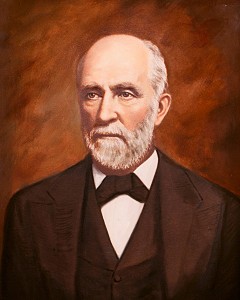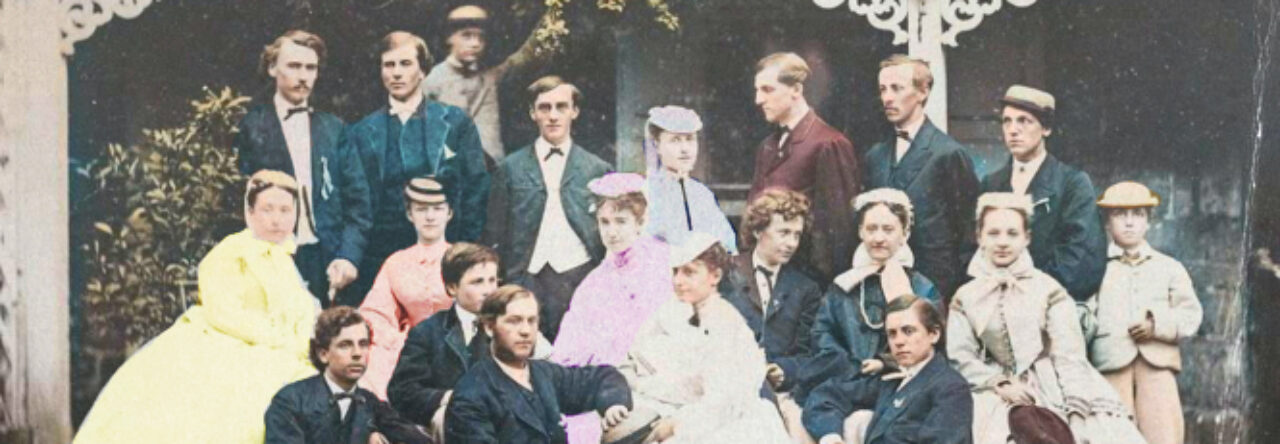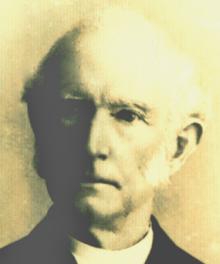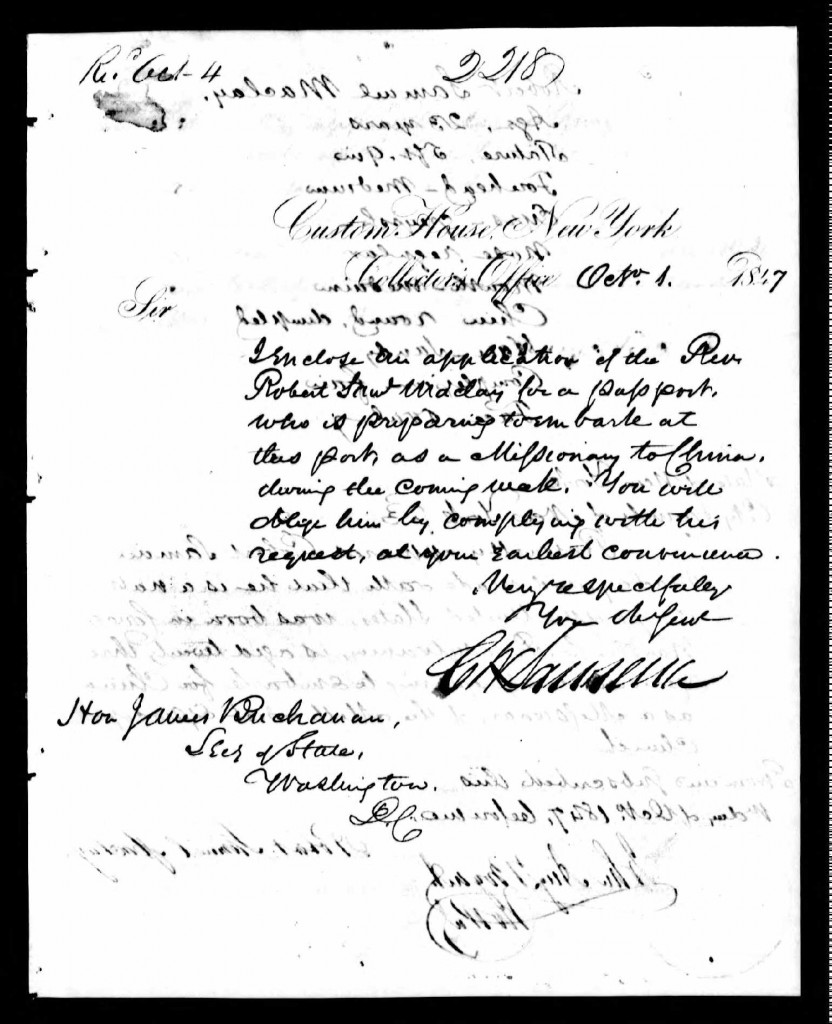Data Overview
Dickinson’s Class of 1845 consisted of a total of 49 students: 18 graduates and 31 non-graduates. In order to get a better sense of who these men were, I compiled them into a spreadsheet using the information available in the 1905 Alumni Record. Each student’s name, birth state, occupation, campus involvement, and whether or not they graduated were included in this spreadsheet. The students were listed alphabetically by last name to facilitate easier navigation. The categories above were chosen for a few reasons. I decided to include each student’s state of birth (if listed) in order to get a better idea of what sort of demographics the class was made up of. The majority of the students came from the mid Atlantic but there were some students from states farther west and south. Knowing where the students came from is important because it gives a better understanding of each student’s values.
In terms of occupation, I listed the broader category of profession for each student rather than their specific job. Since I haven’t gotten into the meat of this project yet, I decided that it’s not that pertinent to know what exactly each student was doing in the years after they graduated. The most common professions were religion and education, but students also became employed in things such as trade, finance, law, and the military. Using the broader category also shows the most common fields of employment for the class which I can then use to decide what I want to focus on for the final project.
During the 1840s the only extracurriculars offered on campus were the Belles Lettres and Union Philosophical Societies. 25 of the members of the class of 1845 belonged to the Belles Lettres Society while 18 were involved in the Union Philosophical Society. 6 students had no affiliation listed in the Alumni Record.
In addition to the columns talked about above, I included a final column titled “Follow Up”. In this column I put down whether or not I thought the student was someone I wanted to research in more detail. This was based primarily on the amount of information available for the student in the Alumni Record because the students with the most information seemed to have led the most distinguished lives. This column allows me to quickly find who I want to research more later on rather than having to enter search every name and see what comes up. Of the 49 members of the class of 1845, there were 8 students that I thought were worth researching further.
Other Reference
Going off this shortlist, I started by entering each student’s name into Google. While I didn’t get any useful hits apart from the Dickinson Encyclopedia for most of the men, there were a couple that did get some hits. One of these was Robert Samuel Maclay, a methodist missionary who was in charge of the missionaries in China, Japan and Korea during the mid 1800s.Through this search I found multiple reference sources about Maclay’s life. In addition to an entry in the Dickinson College Encyclopedia, I also found a Wikipedia page for him and an entry in the Biographical Dictionary of Chinese Christianity. This last source is a project seeking to compile entries on all Chinese and foreign Christian missionaries who played a part in expanding Christianity in China and is contributed to by scholars from all over the world. I found the Dickinson Encyclopedia entry to be the most useful of these sources as it contained the most information about Maclay’s life.
I also came across a description of Maclay’s life and work on the Long Island Korean United Methodist Church website. This popular source focused primarily on Maclay’s time as a missionary in Korea and read more like a biography than a reference source.
Reading through these entries was quite interesting, particularly the one on the LIKUMC site because it gave some background information on the state of relations between the US and Korea during this time period. I learned from these sources that Maclay wrote 2 books while in China: Life Among the Chinese With Characteristic Sketches and Incidents of Missionary Operations in China, which described not only his missionary work in China but also discussed the history and culture of China at the time, and Alphabetic Dictionary of the Chinese Language in the Foochow Dialect. It would be interesting to try to find a copy of either of these books to peruse as it would give me a much better idea of what Maclay’s missionary experience was like. I also learned that Maclay was responsible for opening up Korea to Methodist missionaries, which could be an interesting topic to focus on for the final project.

Portrait of Isaac N. Urner during his presidency of Mississippi College. Courtesy of Mississippi College.
I also looked more in depth at Isaac N. Urner. Since the Alumni Record listed him as being president of Mississippi College from 1850-67 I first looked on the college’s website to see if I could find anything out about him. Under the “About” tab on the college website there is a section dedicated to the history of the school, including a timeline of all the presidents with information about what each of them did during their tenure. I learned that Urner prioritized increasing student enrollment and succeeded in growing Mississippi College into one of the largest Baptist schools in the country at the time. It was also interesting to learn that he took no pay during the Civil War and many students and faculty actually left to fight in the conflict. This could serve as a jumping off point if I decide to delve into higher education and the Civil War for the final project.
I also found a history of Urner’s family on Google Books in an 1881 book titled History of Chester County, Pennsylvania, with Genealogical and Biographical Sketches. While this is a primary source since it was published during Urner’s lifetime it is also very much a reference source and provides only a brief overview of his life and family. It was interesting to read this section because it gave details not only about Urner’s wife and children but also his ancestors who lived in Chester County. Knowing about what Urner’s childhood and home environment were like could be useful should I choose to focus on him for the final project as it gives me a more wholesome view of the man.
Ancestry.com
I chose to research Robert Maclay’s genealogy using Ancestry.com because I found him to be the most interesting member of the class. I started by using the information provided in the Dickinson Encyclopedia for his birthday and place of birth and entered those into the search engine. Ancestry very quickly provided me with a census from 1900 in which Maclay is listed along with his second wife Sarah. Interestingly, the census records that Maclay had been married for 49 years. I was somewhat confused by this until I realized that the census was counting the total number of years Maclay had been married. According to the Dickinson Encyclopedia he had originally married Henrietta Sperry in 1850 but she died in 1878. He married Sarah in 1882 which would make his total years married 46 rather than 49. This disparity could suggest that either Maclay misremembered what year he married Henrietta when he was talking to the censor or else the censor misheard him and thought he said 46.
In addition to the 1900 census I also managed to find a letter to the Secretary of State asking for Maclay’s passport to be approved. While I couldn’t make out the signature at the end of the letter, I was intrigued by the fact that someone was writing directly to the Secretary of State in Washington asking for a passport to be approved. The letter suggests that there was some issue of time as the author says that Maclay was supposed to leave for China in the coming week, but it’s nevertheless interesting that they wouldn’t first go to someone lower down on the ladder.



Leave a Reply